Sometimes a blackhead is a good thing….when it signals the imminent hatching of a Queen or Monarch butterfly caterpillar, for example.
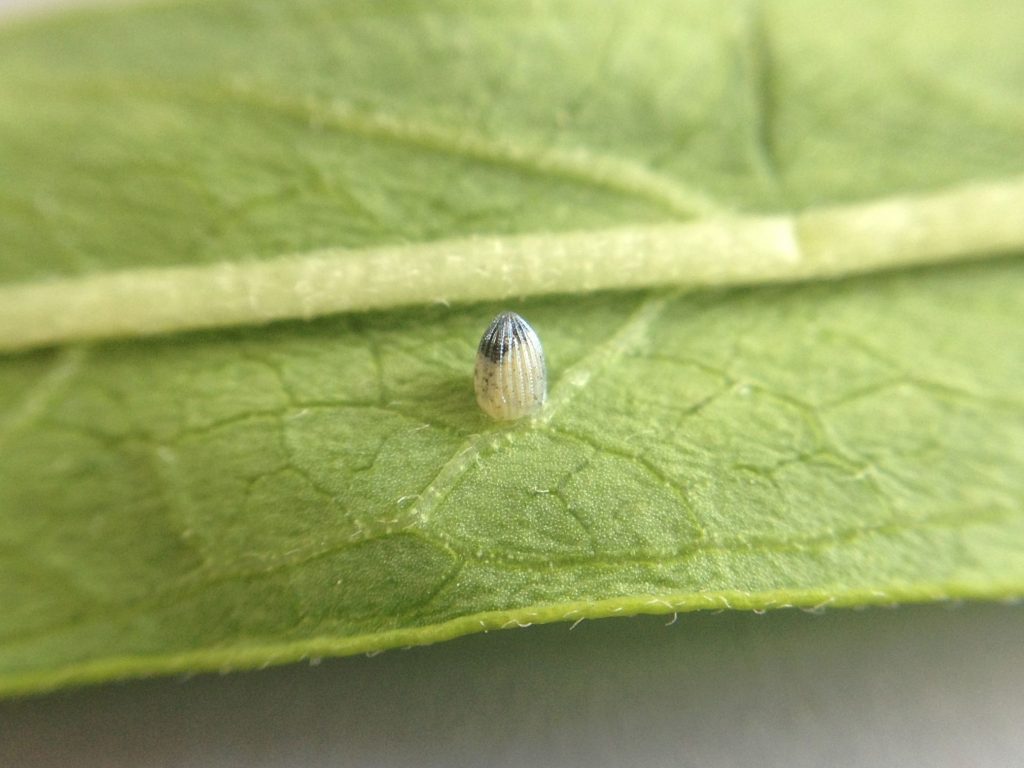
Black head on Monarch or Queen egg suggests imminent hatching. Soon, Lil Joe was born. Photo by Monika Maeckle
Labor Day usually marks the kick-off of Monarch tagging season for me and my mariposista friends. Often we gather at the ranch for the three-day weekend, tags in one pocket, notebook in the other, a butterfly net in hand and a rack of babyback ribs slow cooking on the smoker. We move up and down the banks of the Llano River on foot and in kayaks looking for the Monarch butterfly vanguard, the early arrivals of the magnificent Monarch butterfly migration. Central Texas stream systems are a favorite passage on the long journey from Canada to Mexico each fall, and the first pulse of migrants typically shows up around the end of August.
These early arrivals often break their reproductive diapause, the state of suspending their sexual activity in order to conserve energy for their long flight. When that happens, they often deposit eggs on milkweed host plants in our gardens and along the Llano River.
And who can blame them for breaking celibacy vows to take advantage of available sexual, host plant and nectar resources? The definition of success to an insect is to reproduce.

Pat Epstein in search of Monarch butterflies and their eggs on the Llano River. Photo by Monika Maeckle
That’s why our Labor Day Monarch tagging team makes a point to look not just for butterflies, but for eggs and caterpillars on the undersides of the leaves of Asclepias incarnata, Swamp milkweed. The native milkweed, a Monarch host plant, blooms pink in late August and early September and awaits butterfly travelers as they journey south. Science suggests that when the butterflies break diapause they do not migrate. It’s either migrate or reproduce. Understandably, no Monarch butterfly has the energy to do both.
The good news is that the offspring of those vanguard Monarchs will grow up in about four weeks to migrate. Their journey will be a much shorter one than that undertaken by those Monarchs who began the trip in Ontario or northern Michigan–about 870 miles compared to 2,500+. San Antonio or the Texas Hill Country to the roosting spot in Michoacán makes for a much more manageable trip, especially when you are young, energetic, and well-fed on fall blooming nectar plants.
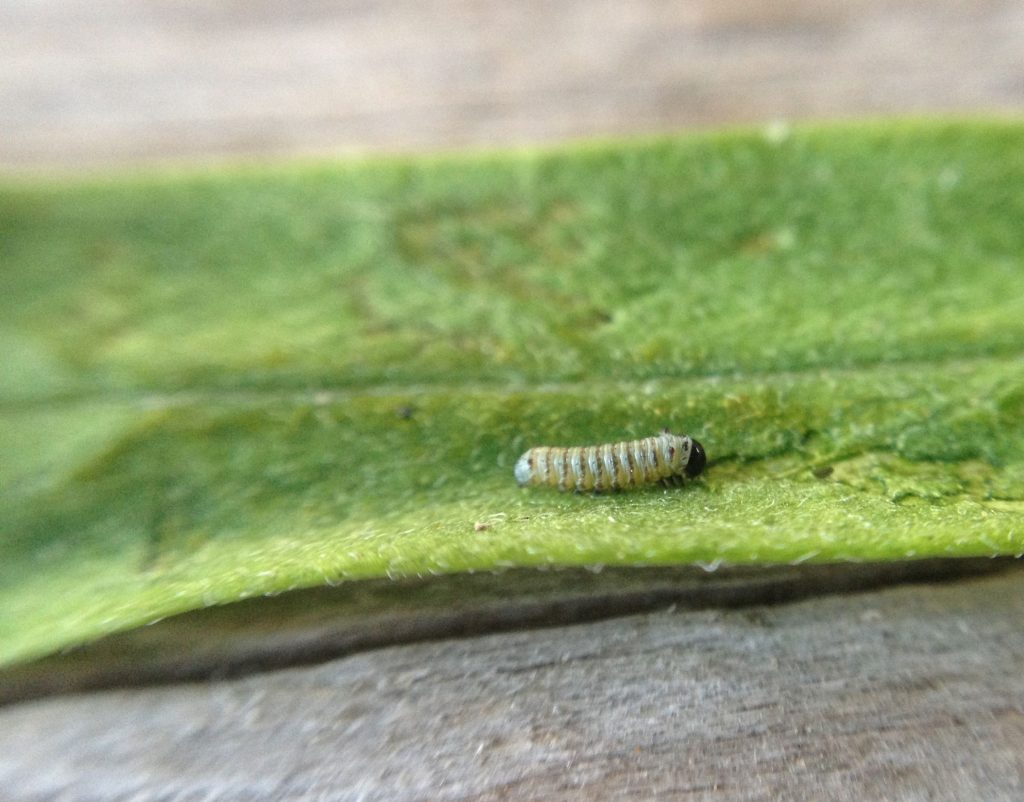
Welcome to the world, Lil Joe! Monarch or Queen caterpillar hatched before my eyes. Photo by Monika Maeckle
Out of approximately 2,000 Monarch butterflies tagged by our team since 2005, 25 of “my guys” from Central and South Texas have made it to the ancestral roosts in Michoacán, according to the Monarch Watch butterfly recovery database. That’s what motivated my friend Pat Epstein of Austin to join me, my husband Bob, and my able assistant Cocoa for daily inspections of the Llano River milkweeds this weekend.
We saw very few butterflies in general—only three Queens, several Gulf Fritillaries, an occasional Eastern Swallowtail and periodic Sulphurs and Skippers, as well as a hatch of the elegant Amymone, a small peaches-and-cream colored brushfoot.
Plenty of bees, aphids, wasps, fire ants, mosquitoes and grasshoppers joined a loud chorus of cicadas as we perused the milkweed stands and observed nectaring on Goldenrod and Snow-on-the-Praire. Perhaps that 2.5 inches in the rain gauge, apparently from a passing thunderstorm earlier in the week, provoked recent hatches.
We did find several caterpillar eggs, however, including the one pictured at the top of this post. Within hours of retrieving it, the egg turned grey, then black. About 4 PM the same day, just as I was mopping the ribs on the smoker, Lil Joe, as we named him, was born.

Olloclip. LOVE this cool 3-in-1 lens that snaps right onto your iPhone. Thanks to Wayne Alexander for the great gift! Photo by Monika Maeckle
The tiny critter measured but a fraction of a centimeter in length. Honestly, you wouldn’t see him were it not for my handy Olloclip close-up lens, which snaps onto the corner of my iPhone and offers 10x magnification.
Welcome to the world, Lil Joe!
We named him/her for being sweet but wearing a “black hat” like the youngest brother in the epic 60s TV series Bonanza.
It’s too soon to tell if Lil Joe is a Monarch or Queen. As he/she develops, we’ll be able to tell by how many sets of tentacles display on his striped body. Monarchs have two; Queens three.
We observed no Monarchs—until I was packing up a few eggs collected from my kayak. Right in front of me, I spotted a lone female, the singular sighting of the weekend. She was tattered, faded and fertile. She laid three eggs on a milkweed plant right in front of my boat. I whipped out my camera and took the shots above and below.
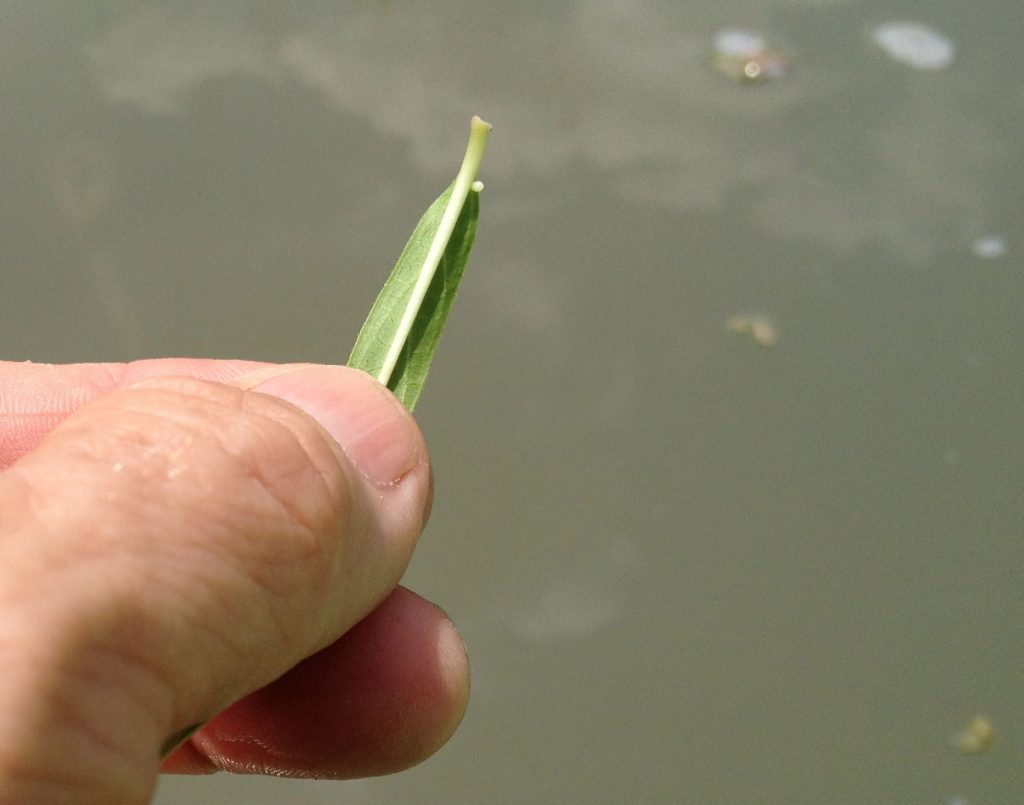
One of three Monarch eggs laid by the female above and retrieved from Milkweed on the Llano River. Photo by Monika Maeckle
The Monarch’s eggs will be added to our brood with Lil Joe. When they hatch, we’ll provide fresh milkweed, clean their caterpillar condos and await their transformation from one stage to another until they form their j-shape and then a jade green chrysalis with gold flecks. Once a Monarch butterfly emerges, we’ll tag her and send her on her way.
Check back here for updates.
More posts like this:
Like what you’re reading? Don’t miss a single post from the Texas Butterfly Ranch. Sign up for email delivery, like us on Facebook, or follow us on Twitter, @monikam.


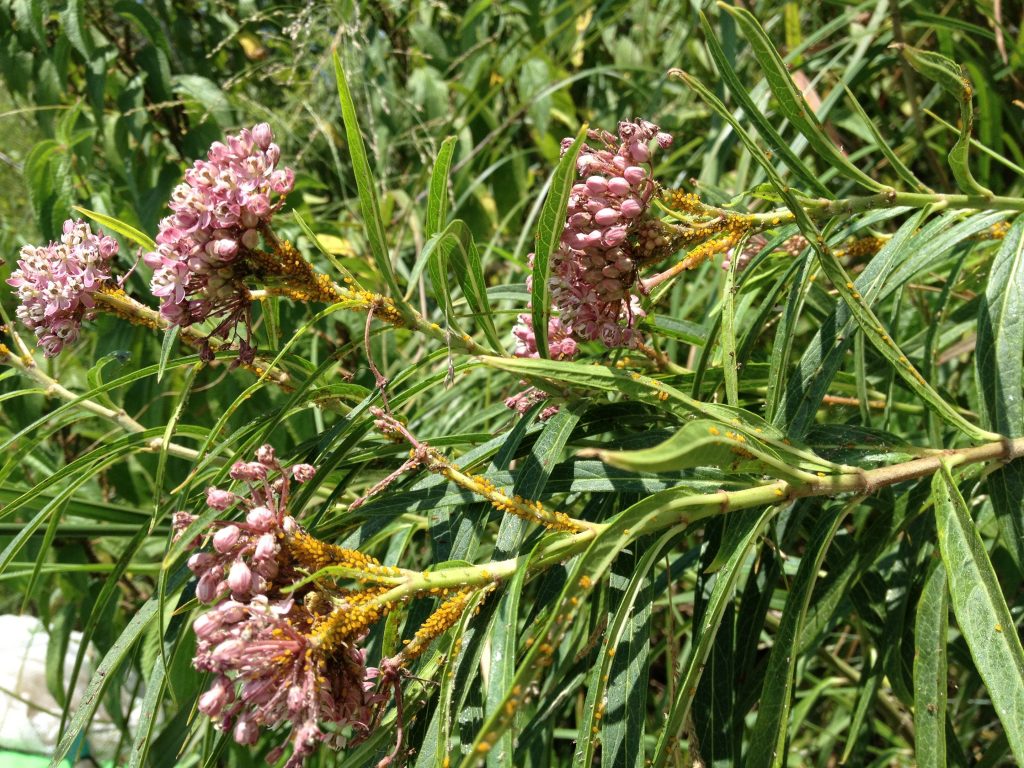
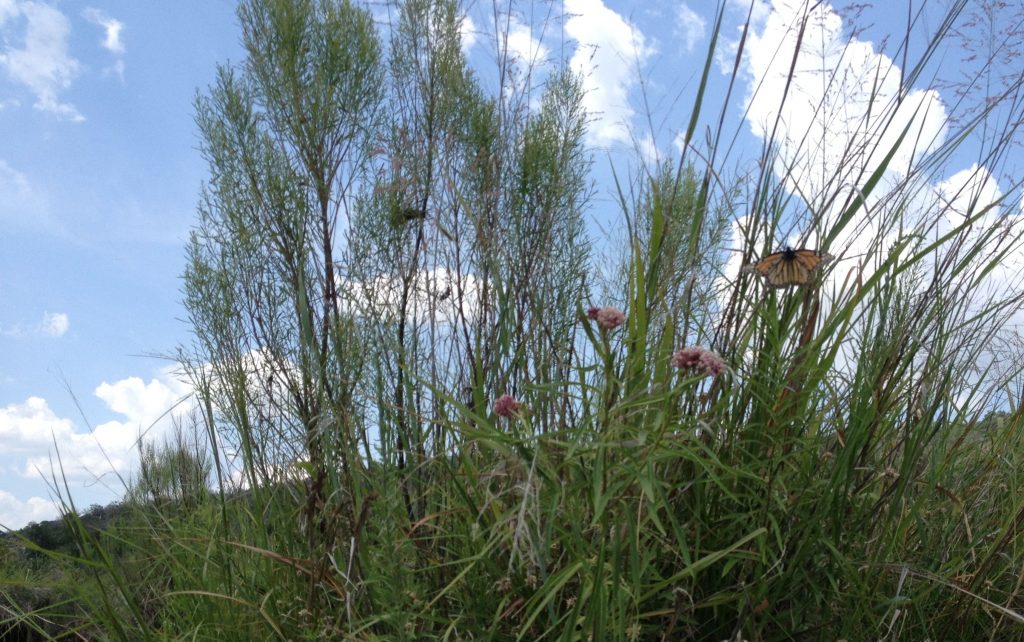
I have been able to witness the entire process in my backyard in New Orleans, except the steps from the tiny white egg till it comes out of the egg. I’ve seen the tiny caterpillars after what must have been their arrival out of the egg, but I keep missing the hatching. On my facebook, Julie Hines, I recorded in photographs and video the transformation of 8 butterflies. My “baby,” the last was finally born, but with crumpled wings. It was my favorite.
Right now I have 9 ravenously hungry caterpillars in a basket in my den. They are now going through 4-5 plants a night. The “Js” must be coming.
I love your blogs. Keep them coming.
Thanks, Julie. It’s fun, isn’t it? Keep doing it.
MM
I am the only one from out native plant chapter to have monarchs this year. I raised nine and let them go probably three weeks ago. I would have had more but the wasps realized they were there about the same time I did. I live in Northeast Texas.
Congratulations, Pam. Keep up the good work.
Lil Joe is a monarch. You need magnification to see the tentacles of a newly hatched (1st instar) caterpillar. Monarchs will have 2 pairs of tentacles, head and rear, and queens will have 3 pairs of tentacles, head and read plus on the thorax. Lil Joe has 2 pairs of tentacles, clearly noted when the image is magnified.
Also Monarch Watch is looking for A. incarnata seed. If your milkweeds produce pods, please collect some seed and send it to Chip Taylor.
Thanks, Kip. Yes, indeed Lil Joe is a Monarch. Will look for seed later in the season.
MM
[…] eggs should darken, by the tip especially, before they hatch. (Cool pictures here, and here.) Most of the eggs on Plant 1 and Plant 2 still look bright white. Now I know this isn’t a cause […]
I found a monarch caterpillar in my garden one day. So decided to buy some milkweed since didn’t have any and assume a monarch butterfly decided to lay some eggs while feasting on my pentas. See them daily. Well got milkweed and have had over 30 caterpillars born but only like 3 have went into cocoon stage and never hatched. All the other caterpillars died. Then more were hatched and same thing they are all dying. What is going on? I don’t really bother them other than bring inside on very cold days. Other then that don’t mess with them. I have bought more milkweed and buy it at a nursery that is pesticide free. I have aphids but I do remove when I find them. I would really love to he able to help the monarch population but don’t know what is going on with them dying. If I find any pest like spiders I take care of immediately. Please help. You can personally email me at slimkittykim@aol.com. I don’t want to get real serious in raising them as far as going to measures of getting way involved but would like to give them help in my garden to survive and reproduce. I have found cocoon (know the proper word but not spelling) lol. on ground and have hung properly in cage but still doesn’t hatch so far. Not sure what else I can do. Thanks. Kimberly from Seminole, FL